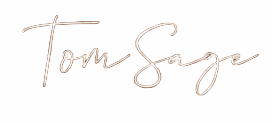Hey you guys, Tom Sage here, and in this content writing tutorial for beginners, I'm going to show you 7 neat tricks you can use to write powerful and engaging content.
You know the types of content I'm talking about.
The ones that get all the attention. The ones that appear on the first page on Google. The ones that get hundreds, or even thousands of subscribers, followers, comments, and shares.
Don't worry if you're a complete beginner because the strategies I'm going to teach you are quite simple to use and are going to boost your readership as well as your rankings on Google.
So as we get started, try and take a second to consider the things you focus on the most as you write content.
Do you focus on improving the value you offer your readers? Do you focus on holding your reader's attention as you guide them through your sales funnel? Or maybe you just focus on having your readers follow and engage with you on social media?
Whichever it is, there are golden rules you need to respect. The goal is to make sure people are reading your content all the way through without clicking away.
Because if people aren’t reading your content, then they won't subscribe to your email list, they won't follow you on social media, and they won't buy whatever you’re selling.
So let's get right into it.
Rule of Thumb #1: Before You Write a Darn Word, Do Your Keyword Research!
You need to write about relevant topics that people are interested in. If you write about things that nobody cares about, guess what? Nobody reads!
For example, you can spend hours, days, or weeks writing about why Tinklebell identifies as a fairy even though she lives in Pixie Hollow.
You could do ALL the research.
You can gather some of the greatest art designers and copywriters. You can have them create excellent graphics and copy on the subject. You could even write a 50+ page ebook and give it away for free to those who sign up to your 'Tinklebell is actually a pixie' email list!
You could do all of that and more and what you'll get is... NADA.
NOTHING. No readers, no views, and no engagement.
Why? Because NO ONE CARES!

If you haven't properly researched what people are ALREADY interested in and looking for, then you've lost before you've even written a word.
Keyword research is an ESSENTIAL first step to writing content.
Make sure you pick a keyword that is:
- Not too competitive. (Especially if you're starting.)
- A long-tail keyword. (Meaning you should target keyword phrases with 5-6 words rather than 2-3 since they're more specific and usually less competitive.)
- Generating decent monthly search volume. (I recommend at least 10,000+ searches per month.)
- Not saturated. (Make sure there isn't already a ton of content that was recently posted around the keyword. Otherwise, you risk drowning your video or article post in a vast sea of other content that's already established.)
Rule Of Thumb #2: The MOST Important Thing You Write Is Your Headline.
It's true!
More than 70% of people will decide whether or not they'll read your content based only on your header. Your header must grab attention and trigger interest.
Follow these pro tips to take your header to the next level.
Headline Pro Tip 1
Research has shown that your header should never have more than 13 words. A header with more than 13 words can decrease readership at a rapid rate.

Make sure you always specify what your content is about and how it will benefit the reader—ALL in a header of 13 words or less.
So grab an axe and chop down your lengthy headline into a lean, clean, digestible header.
Headline Pro Tip 2
In your header, ALWAYS mention the keyword phrase you're targeting AND, if possible, the number one benefit.
For example, If you're writing about Fortnite and the keyword you're targeting is 'how to win at Fortnite', then your header should include the keyword phrase you're targeting AND a powerful benefit to the reader. So your header should look something like this:
How to Win At Fortnite (Discover 5 Secret Tips Pros Use!)
If you're a struggling Fortnite player looking for ways to improve your game, chances are, you'll click that headline.
Rule of Thumb #3: include visual media (pictures and videos) in your content
When was the last time you read an article post online–all the way till the end–without pictures, graphs, videos, or any sort of visual media?

If you do remember, then pat yourself on the back because you're weird!
The reality is, there are hundreds, if not thousands of other websites posting content related to your topic ALL. THE. TIME.
Combine that with the incredibly short attention span of web surfers and you got yourself a major need to keep your reader constantly entertained.
Why?
Because if your readers get bored, guess what they're doing next? They're going to drag their mouse pointers over to the big fat, dreaded 'X', leave your page and never come back.
I know, it's pretty harsh..
But wait! Hold your horses.
That doesn't mean that you have to flood your content with irrelevant visual media either.
Be reasonable and use your judgement. If you've written a 1,000 words, then I'd figure, 2-3 pieces of visual media are reasonable.
Rule of Thumb #4: break up your content into readable chunks
Sub-headers are important because they allow readers to easily navigate your content for the parts that interest them most. Nobody likes looking at a gruesome, brick wall littered with words.
People enjoy taking shortcuts. Sometimes, they don't want to read your entire post. Sometimes, they just want to read a specific part of your post that answers their question.
For example, if I'm trying to find useful tips about writing headers—and I come across a 1,000 word blog post—I'm going to scan the post for an answer to the specific question I have instead of reading the entire thing.
And if god forbid, the article I'm reading looks like this

Ok... Maybe I'm exaggerating a bit. But you get the idea.
Grab a big old chainsaw and slice up your sentences into small, neat blocks of text—organized into sub-headers—so people can easily read through your content and find what they're looking for.
Rule Of Thumb#5: Replace 'I', 'Me', 'Mine' With 'You', 'We', 'Us'
Implementing this neat little trick boosts your readership for one simple reason.
People like it when you give them extra, special attention.
If your readers feel like you're speaking to them directly, they'll feel a stronger connection with you.
For example, instead of writing 'Discover 5 tips that improve conversions!' you can write something like 'These 5 tips help you improve your conversions!'
Structure your sentences whereby you're addressing your reader directly.
Filling your content with words like 'you' and 'yours' can have a powerful impact.
You want your readers to feel more and more like they're having a conversation with you so they'll begin to trust you more. When your readers trust you, they read your content, follow your recommendations, and even purchase your products.
Wanna put this idea on steroids? Sure you do!
Here it is: The next time you write content, play a mental image of your best friend, and write your content as though you're writing to him/her.
This technique is incredibly powerful but also quite simple to implement.
So use it!
Now all that's left is to test how well your copy flows by reading it out loud. If you cringe or shudder, then your flow needs work.
Rinse and repeat until your copy sounds like a conversation you can picture having with your friends.
Rule Of Thumb#6: Ask Questions
Earlier, we discussed the importance of keeping your reader entertained, especially since your reader has hundreds of websites he can go visit instead of yours.
A powerful way to keep your reader engaged is by asking questions.
Here's an example of this in action:
"Have you ever found yourself 'roped' into an unwanted conversation with a complete stranger? A true chatty Cathy who genuinely made you wonder how long an ordinary human can go on yammering without catching a breath?
Have you found yourself nodding in tepid agreement, praying to dear god that he'll shut his yapper for just 10 seconds so you can politely disengage from the conversation?"
Did you notice what happened? How about now? (Psst, I'm still doing it.)
In the example above, by asking questions, you hold onto your reader's attention—you keep him engaged and pique his curiosity.
Never forget, the main purpose of any sentence you write, is to get the next sentence read.
Questions are excellent tools for achieving this and they're quite easy to use. So always toss in a couple of questions when writing content.
What do you have to lose?
Rule Of Thumb#7: Confidently Ask Your Reader To Take Action.
Many content writers have a certain action they'd like their readers to take, but sometimes, they don't understand the importance of asking, OR they're too shy to ask.
If you've written great content that adds value, then don't be shy to ask for something small in return.
If your reader feels like he's gained value from your content, then more often than not, he'll be happy to reward you by heeding your call to action.
Not mentioning any call to action, gives you almost 0% chance of it happening— so you really have nothing to lose by including it.
So don't be shy to:
- Ask your reader to subscribe to your email list or your YouTube channel.
- Ask your reader to follow you on social media or share your content.
- Ask your reader to buy your product or service.
Here's what I like to do.
I personally thank my readers for their time and attention before transitioning into my call to action, and I recommend you do the same.
For example, ask your reader to leave a comment with his thoughts and opinions, and then thank him for checking out your content. Then you can close it off with your call to action by saying something like:
''If you benefitted from my content, please subscribe to my monthly newsletter to get constant updates on X.''
The call to action should be reasonable, clear, and easy to perform. Make sure you make life as easy as possible for your reader by directing him to the email subscription box or the product page.
Have You Gained Value From This Content Writing Tutorial For Beginners?
This content writing tutorial for beginners focuses on fundamental basics you should practice using before you move on to more advanced techniques.
If you implement these 7 rules of thumb, I promise you'll see positive results—both in your readership and your conversions.
So get out there and start producing some stellar content your readers can enjoy!
Thank you guys for reading my content writing tutorial for beginners.
I really hope you enjoyed it and I strongly encourage you to apply all 7 rules of thumb to improve your content writing. Make it a habit to apply the 7 rules of thumb and it'll come naturally with time.


I am keen to read everything you write. You really inspire me.
Thank you so much Mona, I’m glad you enjoyed the article! I look forward to reading more of your feedback! 🙂